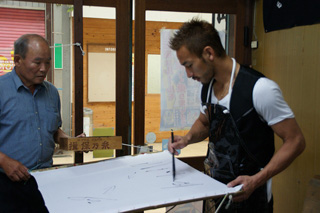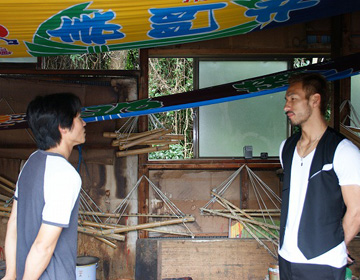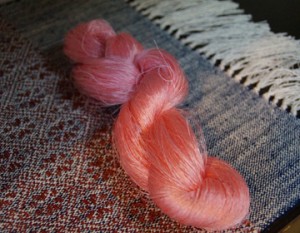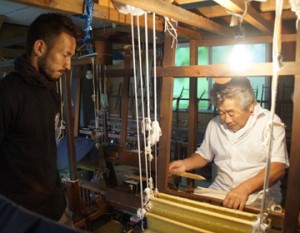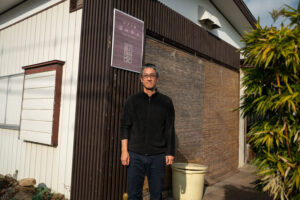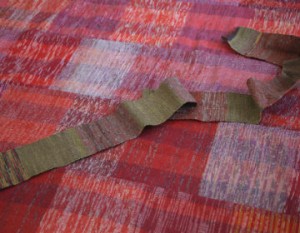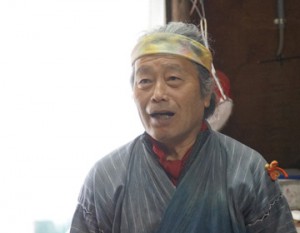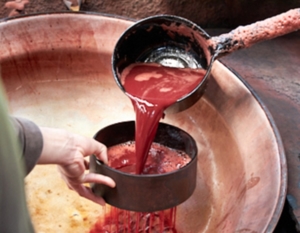Well established store selling only dyed goods.
”Matsuya Dyed Goods Store” in Koyamachi town, Yonego city is such a well known name that when local people hear ”Koya”, they say ”Matsuda”. This is because the store has continued business uninterrupted for more than 300 years since the Edo period, and is currently led by the 12th generation. The name of the town is pronounced either ”Koya” or ”Konya”, also being synonymous with dyed goods.
Name of the dyeing craftsman
During the Edo era, dyed goods were produced by a division of labor, and the names of the craftsmen varied depending on the dye color they were responsible for.
●”Murasaki shi”: Worked with the purple dye using the plant, leptospermum erythroidine. The color did not take very well, and required more work to dye using this plant.
●”Kurenai shi”: Worked with the red dye. They worked during the winter using safflower.
●”Chazome shi”: Responsible for the intermediate colors such as brown, using plants such as Roger’s bronze leaf and the sawtooth oak. During the middle ages, the brown master was in charge of dyeing clothes for the aristocrats in the Imperial Palace.
●”Koya”: In ”ai-zome” or indigo dyeing, the indigo is fermented and dyed separately according to the type of cloth. They are also called ”indigo dyer”.
Among these, ”Koya” became very successful during the Edo era, and people began using the name to refer to not only ai-zome but also all dyed goods stores.

Handmade flags for fishing boats
”Matsuda Dyed Goods Store” started as a ”koya” for ”ai-zome” at the end of the Edo era, and began ”tsutsugaki” from the beginning of the Meiji era. ”Ai-zome” uses ”sukumo dama”, which is a ball made from dried knotweed leaves. The fermentation is adjusted to dye the cloths various colors of indigo. ”Tsutsugaki” is the process of placing glue made from glutinous rice flour using a tanned paper cylinder for the outline of the patterns on the cloth. The glue prevents the dye from adhering to the cloth.
One of the products created using ”tsutsugaki” is the flag used by fishing boats with the characters ”tairyo” or ”big catch”. The flags are given to the captains of new boasts as gifts, and many orders come from people in the fishing industry in Sakai port and Okishima Island. Matsuda Dyed Goods Store also get requests for national, corporate, victory, and school flags, ”furoshiki” and ”happi”.
Nakata was given an opportunity to try ”tsutsugaki” dyeing. It was astonishing to be able to create so many detailed patterns by hand. This kind of delicate sensitivity is an attribute the Japanese people can be proud of.
